Becky Robinson's Blog, page 59
March 8, 2016
Fresh Start, Fresh Handle: How and Why to Change Your Twitter Name
Where I live on the Potomac River in Alexandria, Virginia, the trees are still bare and grey, but geese are starting to fly north. I’m starting to think about Easter dinner, and maybe even cleaning out that one terrifying linen closet. Spring is creeping just around the corner, and maybe that has you in the mood to freshen up your online presence — including your Twitter profile.
Here’s the number one question to ask about your Twitter handle, and for that matter, everything in your profile: is it clear? Each tweet you send creates a URL, which is the main tool search engine crawlers use to summon results. An easy to find, easy to understand handle isn’t just good for your search engine optimization (SEO) – it’s crucial.
Not only that, when users search for your name, it’s confusing to find a profile that looks like it belongs to a high schooler, like @icecreamguy54. A better choice is your name or the name of your business. The best choice by far would be something that closely matches your website domain — it looks much more professional.
Here’s my own personal example. When I first got on Twitter in 2009, I was by no means the first Laura Finch to do so…apparently it’s quite a popular name, especially in England. I didn’t want to add a bunch of numbers to the end of my handle in order to stay Laura Finch, so instead I went with the name of a beloved literary character: Atticus Finch. Unfortunately a lot of other people also had the same idea, so I ended up with @atticus__finch. With two underscores. #Ugh.
At the time, I worked in politics and was clueless enough to think my handle was cutesy. After all, it was a nice reference to a character I aspired to be like, and showed everyone how bookish I was. It worked fine for a while, although the double underscore probably made it tricky to find me, but eventually I bought laurafinch.com and embarked on some serious online presence cleanup of my own. The final nail in the coffin was when came out. Time to get back to basics!
I’ll tell you the end of that story in a minute, but let’s help the “@icecreamguy54’s” of the world first. Changing your handle is easy enough; all you need to do is select “Settings” from the drop down menu in the top right of your profile.
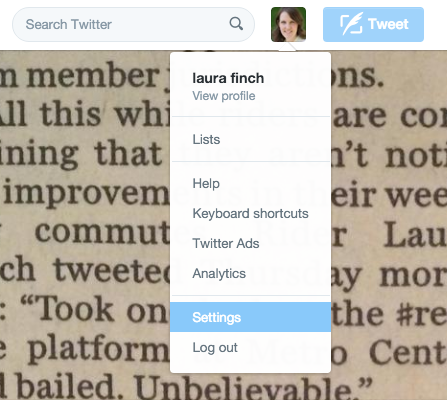
You’ll see your existing username right at the top.

Try typing the username you’d prefer. Twitter will let you know if it has already been taken.
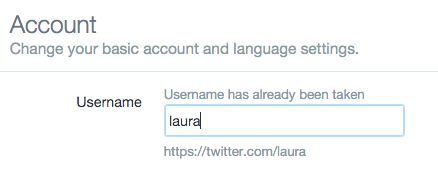
When you find one that’s free, it will also let you know.
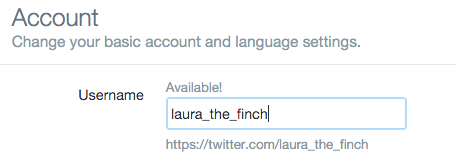
Here’s the good news about changing your Twitter handle:
● All of your followers will stay the same. When you tweet, instead of seeing your old handle, they’ll see your new one. Bam.
● All of your tweets, replies and messages (the ones found on your Twitter page) will also stay the same. The archive will still be there.
Here’s the bad news about changing your Twitter handle: tweets from others that contain your old handle won’t change. For example, if you do a lot of back-and-forth chatting on Twitter with friends, their conversations with you will now look one-sided because your old handle will lead nowhere.
Another thing to keep in mind: as soon as you give it up, your old handle will be up for grabs. Anyone can claim it and start tweeting as your old identity, and people who aren’t aware of your Great Rebranding of Spring 2016 and try to tweet at you will get very confused.
This may not matter if you were formerly @icecreamguy54. But, for example, if @laura were to magically become available to me (it won’t – it’s owned by a former Twitter employee), I might still want to maintain control of @laura_e_finch. There’s a simple remedy for this too. Start a new email address and grab your old handle with it — quickly. Use your “old” profile (which will now be empty) to point to your new handle, and you can avoid all of that confusion.
Hopefully, with these tips, you’ll look a lot more credible on Twitter, keep all your followers in the transition, and avoid the mistake I made: leaving Atticus unattended. Sorry, Mr. Finch!
March 4, 2016
Featured on Friday: #UnderNewManagement by @davidburkus

My husband likes to say that I am a “safety first” woman. I find security in doing things the same way, in following rules and avoiding unnecessary risks. There’s a reason Becky Robinson started Weaving Influence (willing to take a risk) and why I’m more content as a contractor (it’s “safer” here). If the “status quo” is working, why change it, right? Not necessarily.
All across the world, people are coming up with new ideas, new ways of doing things; they are breaking the mold, punching out of the box, and trying new management systems that might cause a few heads (including my own) to spin. But you know what? It’s working.
How do I know it’s working? Meet today’s author…
Meet David Burkus

David Burkus is passionate about leadership, innovation, and strategy. He’s made it his purpose to facilitate the transfer of good ideas. Toward that end, he is focused on filling that gap between what science knows and what we most often do.
He is the author The Myths of Creativity: The Truth About How Innovative Companies Generate Great Ideas. He writes regularly for Harvard Business Review, Forbes, PsychologyToday and 99U. He’s also the founder and host of Radio Free Leader, a podcast that shares insights on leadership, innovation, and strategy.
David has delivered keynote speeches and workshops for Fortune 500 companies such as Microsoft and Stryker, in-demand conferences such as SXSW and TEDx events, and governmental leaders and future leaders at the US Naval Academy and Naval Postgraduate School.
“When I’m not speaking or waiting in an airport lounge, I’m in the classroom.” ~ David Burkus
David is an associate professor of management at Oral Roberts University, where he teaches courses on organizational behavior, creativity and innovation, and strategic leadership.
Connect with David on Social
You can find David on Facebook
Follow him on Twitter @davidburkus
Connect with him on LinkedIn
Add him to your circles on Google+
Discover Under New Management
“I can’t stop raving about Under New Management to friends and colleagues. If you are going to read one book on being a better manager in the next year, start here. David Burkus has assembled the most practical research and provocative ideas into an incredibly quick read.” – Tom Rath, bestselling author of STRENGTHS FINDER 2.0
From Amazon:
Do open floor plans really work? Are there companies that put their employees’ welfare first, and their clients second? Are annual performance reviews necessary? […] Drawing on decades of research, [David] Burkus has found that not only are many of our fundamental management practices wrong and misguided, but they can be downright counterproductive.
These days, the best companies are breaking the old rules. At some companies, e-mail is now restricted to certain hours, so that employees can work without distraction. Netflix no longer has a standard vacation policy of two to three weeks, but instructs employees to take time off when they feel they need it. And at Valve Software, there are no managers; the employees govern themselves.
The revolutionary insights Burkus reveals here will convince companies to leave behind decades-old management practices and implement new ways to enhance productivity and morale.
Support the Launch (March 14-18)
Want to be a part of our Eleventh Hour Tribe? There’s still time to sign up and receive a PDF to review!
Once you’re signed up for the Launch Team, you can request to join the exclusive Facebook group to share ideas.
The book releases on March 15, so if you haven’t already pre-ordered – Do It Now! (Amazon: US | Canada | UK | Australia | India)
When the book goes live on March 15th, leave a review – authors love reviews, so let’s join the team in driving Amazon numbers!
Write a review of it on your blog and send us the link so we can share it.
Share the graphics & send the tweets from David’s website through your social channels.
Add it to your Goodreads shelf for others to find.
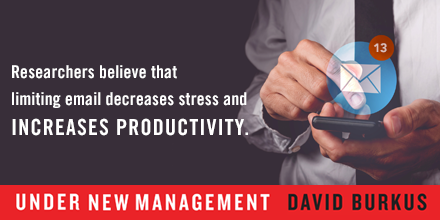
March 1, 2016
Building a New Future With Bricks from the Past
Yesterday, I went out to buy a toy for my 3-month old baby girl. We perused the aisles of high tech games, life-like stuffed animals, and battery-operated battleships with lights and sounds and finally arrived at the 0-6 month baby toys. Not having had much experience with baby toys before (this is my first!), I was struck by the simplicity—mobiles with hanging colorful suns and moons, rattles, and textured teething rings. I picked out a plastic loop-like thing with rainbow animals and off we were.
Everything my daughter does and sees is a new experience. And this simple toy, something that could entertain a four-year-old for about 5 seconds (let’s not forget all the high tech toys us adults play with, too), opens up worlds for this little baby. Everything she does, touches, hears, sees or smells is new, big, and fresh.
That’s a baby’s world—ours looks much different.
More or less, we know what to expect. We go to the bank and wait in line. We open the fridge and there are last night’s leftovers. We work hard and (hope to) get a paycheck.
Yes, we adults have in many ways become used to the patterns of this world, but is our world really SO different from a baby’s? I’ve often wondered—how can we think of time (and life in general) in a way that is both continuous (builds on past) AND brand new?
Rabbi Natan of Breslov, an 18th century Jewish mystic and spiritual leader, teaches that time does not progress in an in exclusively linear fashion—that the past and the present repeats itself in the future but in a new form, and time is more of a spiral than a circle or a line. Think of a clock—every day, we experience “12 PM noon.” That 12 PM noon has some of the same qualities every day, but can also be extremely different from one day to the next.
So, one could consider time and renewal as both part of a repeating pattern AND something completely fresh and new.
In my life, I try (definitely not always succeeding) to look to my past experiences, repeat, and build upon what works, and then use those things to transform my future into something totally new, yet grounded.
This applies to my professional life as much as it does to my personal life. Often times, it is easy to get stuck in the moment—I have no business now! My client is unhappy with me! My co-worker and I are not getting along! (etc.). But if we can take our past successes with us as we encounter challenges, those challenges lose a bit of their bitterness.
Spring is coming! The almond trees are in full bloom, it’s a nice 75 degrees out, and there is a certain happy productiveness in the air. I look forward to a year of growth—physical (baby’s getting big!), spiritual, emotional, and professional. There’s something about the spring that always seems to bring that feeling of newness, that looking at where you have been and considering where to head next.
For me, being grounded in my past with the knowledge that renewal, rejuvenation, and plain and simple originality is always coming makes every day a little sweeter, and perhaps makes my world a little more like my baby’s.
Tell me, how do you incorporate your past experiences into your future plans? What do you see as the optimal balance between newness and repetition?
February 26, 2016
Featured on Friday: On Our #MustRead List!

It’s been a while since I’ve done a linked post on Friday, but one of the best ways to build community is to help spread the word for others, don’t you think? As Becky continues to spread the word about Hometown Reads (links included below, just in case you missed them) starting local with her Toledo community, we continue to spread the word for our “local” online communities as well.
Whether you’re a member of the launch team for David Burkus or you’ve joined us in the exclusive Facebook group for Team Buzz Builder (if you’re on Facebook and a part of TBB, welcome!), community can be found or created just about anywhere… even online.
A friend of mine wrote a post this week on Thin Difference about the importance of community, especially for those of us who work from home. As an introvert, my need for in-person contact differs from my extrovert friend, but the theory of community is one that I embrace. Online or in person, it’s important to find ways to connect with people, engage in conversation, share ideas, and even talk about fun things like book recommendations!
It’s equally important to support others as they pursue their dreams and goals, giving them a shout out online, buying their book, supporting their messages through likes and comments, and opening doors for them into your unique community. Which is what we’re about to do right now… are you ready?
Let’s start close to home with one of the most popular posts on the Weaving Influence blog this month by Team Buzz Builder-turned Weaving Influence Contractor, Paula Kiger! The Invisible Threads of Social Media (congrats, Paula!)
I personally loved this post from Cheryl Bachelder. You’re In Charge Now is a MUST READ for anyone IN leadership, or anyone who thinks they could do it better if they were.
John Thurlbeck represents Team Buzz Builder from his home in the UK, and I loved his tweetable in Six Skills Needed to Work in Complex Organisations – truly, food for thought!
“Success mean your options multiply. Size increases complexity, and complexity can confuse vision.” @JohnThurlbeck
John Perkins, author of our recently launched book, The New Confessions of an Economic Hit Man, has a number of in-person events coming up, possibly even to a town near you (Powell’s City of Books in Portland, Oregon tomorrow night – I wish I could be there, but 3,000 miles…). Visit johnperkins.org/events – updated weekly!
Representing Team Buzz Builder: Kenya, Kimunya Mugo just launched “ Leadership Safari ” to help you unveil your identity, unleash your leadership, and build your legacy. This is an exciting time for Kimunya, and we’re thrilled to support him as part of our community!
Closing out by bringing it back to Hometown Reads, here’s the scoop!
If you’re an author (aspiring or established) in the Toledo area, check out this special, IN-PERSON event taking place on Monday, February 29th at the Weaving Influence office.
Find Becky talking all about Hometown Reads on NBC24 WNWO – Watch the Video !
Follow us on Facebook and stay in the loop about what town we’ll be focusing on next!

Now – we’ve shared our links, what would make YOUR list?
February 23, 2016
The Invisible Threads of Social Media
I work for Weaving Influence, so the idea of “threads” and weaving them together to create a cohesive whole is inherent to what I do every day.
Our goal is influence, so we have to be mindful at every step along the way of the threads we choose, the patterns we follow, and the way we tailor the final product.
As I have recently added another social media outlet, Periscope, to my repertoire, I have been thinking about the type of perceived familiarity social media creates. With Periscope, you see people getting ready for work, putting on their makeup, cooking dinner… it’s almost like being with them in person!
For many people seeking to establish themselves as a brand, this is exactly what they want to do: create the feeling between the viewer and themselves that they share commonalities and could, in fact, comfortably chat over coffee.
If you are working on establishing your brand, allow me to suggest a particular consideration as you choose which threads you weave and how you weave them, based on a bit of experience gained in seven years of being an avid social media user.
The Whole Cloth of Expectations
There will be times when you (and your growing brand) want desperately to interact with your followers. Your fingers will fly to respond to a tweet. You’ll heavily research a Facebook question. You’ll invest all of yourself into being what they want.
The challenge lies down the road, when your brand is bigger and more well-known, and the demands you face are heavier.
There may come a time when the “there is only one of me and there are so many of you” issue will threaten to rip out some of the beautiful social media stitches you have sewn.
Stitching Together A Plan
There may be times when the success you’ve had creating the warm and fuzzy “we’re friends” feeling butts right up against your needs for security or personal boundaries, or simply your need to allocate the ever-diminishing supply of time.
I was inspired to write this post by two incidents where people I felt quite close to, due to a deep and intense social media history, spoke publicly about their boundaries. The problem was: these boundaries did not exist during the preceding years of warm and fuzzy relationship-building (or if they did, I was not aware!).
In one case, someone I had approached about a coffee get-together while in her city said (on Periscope, which didn’t exist back when we became acquainted), “I never get together with followers who come to my city unless they can do something for me and my business.” In another case, a blogger I felt deeply connected with — enough to friend on Facebook — said via a teleconference, “People ask to be my friend on Facebook and I’m not prepared for that kind of exposure.” As you may have guessed by now, I was one of those Facebook friend-ers!
Three considerations come to mind:
Social media will evolve, and you may find yourself on a new channel, sharing old sentiments that come off differently than you intend.
Balancing the sentiment of “we could be friends!” with “we are strangers to one another who have not established a trust or intimacy level” is a delicate thing.
I suspect these two individuals may actually share a fear of mine: that they’re not nearly as compelling in real life as they seem to be online! There’s a certain safety in being behind a screen or keyboard, and in-person interactions can threaten to strip away all of those protective barriers in an instant.
Connections are a precious commodity. If you create a warm, welcoming feel, you need to have a plan for how you are going to erect and maintain your personal boundaries without alienating the very people who are helping you grow your brand.
Friedrich Nietsche said, “Invisible threads are the strongest ties.” As you grow your online presence, keep in mind the invisible threads in addition to the visible ones — they may be the ones that keep your social media fabric from deteriorating into tatters.
Image Credits: Andre Bonn and tom_nulens
February 19, 2016
Featured on Friday: #BKpedia by @BKPub

Over the last few years we’ve had the remarkable opportunity to work closely with several Berrett-Koehler authors, and the fantastic team at Berrett-Koehler Publishers. If you’ve been involved in the launches for Refire! Don’t Retire, Love ‘Em or Lose ‘Em, Managers as Mentors, Dare to Serve, or the 10th Anniversary Edition of The Secret, then you already know the kind of books BK publishes, and the valuable wisdom their authors provide.
Last week the folks at Berrett-Koehler unveiled a fantastic new digital subscription service – BKpedia. If you haven’t already seen this announcement or signed up for your own 7-Day FREE Trial, then let me tell you a little more about it.
What Is BKpedia?
From the Website: BKpedia gives immediate, multi-device access to Berrett-Koehler publications, and to resources from their partners including The Center For Creative Leadership and AMACOM, the publishing arm of the American Management Association. Expert curators have organized hundreds of books into thematic collections designed so users can find exactly what they need quickly and easily, and these collections will be updated regularly with new content.
Some of the benefits of BKpedia include the ability to:
Connect with authors to do anything from ask a simple question to arrange a live presentation.
Search by title, author, subject, date, and more.
Access downloadable and printable PDFs free of digital rights management.
Get unlimited concurrent access for multiple users.
Access via multiple devices including eReaders, smartphones, tablets, laptops, and desktops.
See what our Team Buzz Builder Folks are Saying!
Chantal Bechervaise of Take It Personnel-ly says, “It is a book lover’s dream!!” Read More
Byron Ernest shared a guest post from Authentic Conversations, a book included in the BKpedia service. Read More
Joshua Lee Henry opened his blog up to a guest post from Bill Treasurer’s book, Courage Goes to Work. Read More
Jane Anderson hosted a selection from Trust and Betrayal by Dennis and Michelle Reina. Read More
If developing leadership skills and experiencing personal growth are valuable to you, you won’t want to miss out on this service. Sign Up for the 7-Day Trial Today! Want to learn more or skip the trial and simply subscribe now? Visit…
bkconnection.bkpedia.com
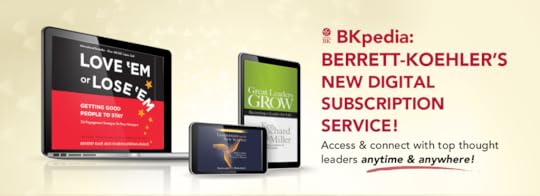
Make 2016 a year of personal continuing education!
February 18, 2016
Collective Visioning: Turning our Dreams and Hopes into Action
This post is a part of our 2016 Team Buzz Builder Guest Blogger Series. Today we are pleased to introduce you to Linda Stout, critically-acclaimed author and Executive Director of Spirit in Action.
Whether or not we’re actively engaged with social justice work, most of us know what’s wrong with our world. Yet often we don’t know what kind of world we want instead. Many are exploring questions of equity and social justice by working to build alternative models. But there are absolutely no organizers (myself included) who have all the answers.
The current way social justice organizations work to create change in the world is not enough. tweet this
We must continue to learn new ways of doing things, leave behind models that aren’t working, and keep exploring with each other how we can become stronger than the sum of our parts. We must take time to work collaboratively, be bold, and try new and sometimes scary things. Our real strength lies in creating solutions collectively.
My favorite saying is, “I’m ready to jump off the cliff without a parachute, and learn to fly on the way down!” This takes courage and the willingness to know that sometimes you will crash. But when you fly, you can reach new levels that you never believed possible.
How do we begin to take this scary step? How do we have the nerve to do it? We jump off the cliff together, holding hands, trusting each other fully not to let go.
We learn to fly together.
It’s not as hard as it sounds. You become a “we” and not an “I.” Each one of us brings a different piece of knowledge, brilliance, experience – and all of it is needed. We have different experience, education, skills, understanding, etc., but the truth is we have to value all of our experiences and knowledge to create a sustainable, winning movement for change.
Together we can figure it out. We can ask strategic questions and begin to dream. What would a just and sustainable world look like? How would a fair and equitable economic system take shape?
We can create a collective vision that is inclusive, where everyone contributes to create the solutions that will work for all of us.
It takes into account each person’s ideas, and brings us together across our differences to articulate what we’re standing for. This is the essence of collective visioning.
Collective visioning is a simple process. Sometimes I ask people to imagine they have traveled in a time machine to the future. I ask them to see the future of their dreams; to think of a child now, experiencing the world as an adult; to focus on the world they want to create in 10 years, 20 years, or even 50 years. In a sustainable, just society, I ask them what community life would look like, feel like, and sounds like. In silence, each person has an opportunity to experience it as though it were real. We then bring all their ideas together through art. We create a shared, concrete picture of what’s most important to us.
Let’s begin asking ourselves the positive and strategic questions we need to ask in order to move forward and find the answers together.
We can work from a place of hope to create a more just and equitable tomorrow. My hope is that all of our amazing energy can bring us together to begin to explore these questions and co-create solutions.
 Linda Stout is a 13th generation Quaker born to a tenant-farming family in the Piedmont region of North Carolina. She began her mission for social change in the 1970s in North Carolina and started her first organization, the Piedmont Peace Project, in 1985. Currently, Linda is the Executive Director of Spirit in Action. She is the author of a critically-acclaimed book, Bridging the Class Divide (Beacon Press, 1997), and Collective Visioning (Berrett Koehler, 2011). You can also find
Linda on Facebook or Twitter.
Linda Stout is a 13th generation Quaker born to a tenant-farming family in the Piedmont region of North Carolina. She began her mission for social change in the 1970s in North Carolina and started her first organization, the Piedmont Peace Project, in 1985. Currently, Linda is the Executive Director of Spirit in Action. She is the author of a critically-acclaimed book, Bridging the Class Divide (Beacon Press, 1997), and Collective Visioning (Berrett Koehler, 2011). You can also find
Linda on Facebook or Twitter.
Image credit: artistlike
February 16, 2016
Tips for Building a Social Community
Have you left the “social” out of social media marketing? It’s easy to use social channels as a megaphone to spread the word about a brand, but megaphone marketing doesn’t have much ring to it and delivers very few results. Social works when a brand actively grows a dedicated, interested, and excited community. It takes effort though, and posting great content is only the beginning. Here are a few simple tips to help turn your followers into tribe members.
1) It’s not about you, it’s about your followers. People follow a brand because they are interested in it—in its value to them. There’s a lot of noise on social media; if your content doesn’t add value to their lives, followers will be gone. Fast. When you are writing social copy or a blog post, think about how you can serve your readers/followers. Just that simple mind-shift could make all the difference.
2) Identify and engage your advocates. Every brand has their super fans. These are the people who regularly share and engage with content, ask questions, and participate. These people are the core of your tribe. Engage with them. Follow them. Share their content when appropriate. It’s important to make your advocates feel special and appreciated. In turn, they will spread the word about your brand far and wide.
3) Surprise and delight followers. Everyone wants to feel appreciated. Find ways to surprise followers. It can be as simple as sending a funny GIF to a fan who’s having a tough day, or sending a surprise gift to a follower who’s gone above and beyond to support your brand. Sponsor contests to reward your engaged followers. Your imagination is the only limit. Every time you give back to your community, you’ll develop greater loyalty and you might make some true friends.
4) Give your followers a voice. Everyone likes to feel part of something and have their contribution valued. Letting your fans/followers respond to poll questions, submit photos, and otherwise share in your channels helps create a real sense of belonging. Sharing user-generated content and re-tweeting can build relationships and loyalty.
When you nurture a community, it becomes healthier and it grows more quickly, similar to a house plant. A little attention can go a long way.
What are you going to do today to connect with your social community in a deeper way?
Image source: kulyk / 123RF Stock Photo
February 12, 2016
Featured on Friday: #NewEconomicHitman by John Perkins @economic_hitman
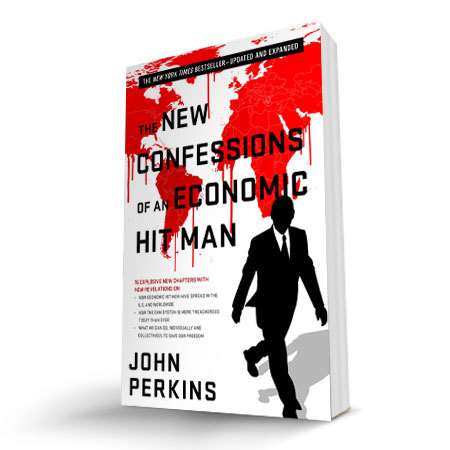
Have you ever picked a book that wasn’t in line with your normal reading tastes – whether it was by choice or by assignment in school – and been totally surprised when you got to the end and you actually enjoyed it? I’ve had that happen a few times in my life (along with the opposite – picking a book I thought I would love, only to be terribly disappointed), and it’s always a pleasant feeling.
Several members of the Weaving Influence team were surprised in a similar way when they read The New Confessions of an Economic Hit Man in preparation for the launch this week. Government conspiracy and international intrigue aren’t the book topics of choice for most of us during our off hours, but each person who read it talked about how it sucked them in and surprised them because it wasn’t a book they would have picked up otherwise. Personally, I’d say that’s a pretty good recommendation for giving it a try, wouldn’t you?
And with that, let’s meet the author!
Meet John Perkins
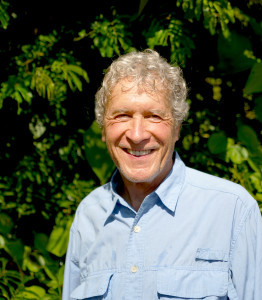
John Perkins: Economist/author/activist. John’s books have sold over a million copies, spent more than 70 weeks on the New York Times bestseller lists, and are published in more than 30 languages. As Chief Economist at a major consulting firm, his experiences advising the World Bank, UN, IMF, U.S. government, Fortune 500 corporations, and heads of state convinced him to devote his life to facilitating changes in social, political, and economic systems, as well as in general consciousness.
He was founder and CEO of a highly successful alternative energy company and is a founder and board member of Dream Change and The Pachamama Alliance, nonprofits dedicated to creating a sustainable, just, peaceful, and thriving world.
John has lectured at universities around the world, and is the author of books on economics, indigenous cultures, and transformation, including The New Confessions of an Economic Hit Man, The Secret History of the American Empire, Hoodwinked, Confessions of an Economic Hit Man, Shapeshifting, The World Is As You Dream It, Psychonavigation, Spirit of the Shuar, and The Stress-Free Habit.
He has been featured on ABC, NBC, CNN, NPR, A&E, the History Channel, Time, The New York Times, The Washington Post, Cosmopolitan, Elle, Der Spiegel, and many other publications, and in numerous documentaries including The End of Poverty?, Zeitgeist Addendum, and Apology of an Economic Hit Man. He was awarded the Lennon Ono Grant for Peace 2012, and Rainforest Action Network Challenging Business As Usual Award, 2006.
Connect with John on Social
You can find John on Facebook
Follow him on Twitter @economic_hitman
Connect with him on LinkedIn
Discover The New Confessions of an Economic Hit Man
“When I read Confessions of an Economic Hit Man, I could not have known that, some years later, I would be on the receiving end of the type of ‘economic hit’ that Perkins so vividly narrated. The New Confessions resonates with my experiences of the brutish methods and gross economic irrationality guiding powerful institutions in their bid to undermine democratic control over economic power. Perkins has, once again, made a substantial contribution to a world that needs whistle-blowers to open its eyes to the true sources of political, social, and economic power.”
—Yanis Varoufakis, former Minister of Finance, Greece
From Amazon:
Shocking Bestseller: The original version of this astonishing tell-all book spent 73 weeks on the New York Times bestseller list, has sold more than 1.25 million copies, and has been translated into 32 languages.
New Revelations: Featuring 15 explosive new chapters, this expanded edition of Perkins’s classic bestseller brings the story of economic hit men (EHMs) up to date and, chillingly, home to the US. Over40 percent of the book is new, including chapters identifying today’s EHMs and a detailed chronology extensively documenting EHM activity since the first edition was published in 2004.
Former economic hit man John Perkins shares new details about the ways he and others cheated countries around the globe out of trillions of dollars. Then he reveals how the deadly EHM cancer he helped create has spread far more widely and deeply than ever in the US and everywhere else—to become the dominant system of business, government, and society today. Finally, he gives an insider view of what we each can do to change it.
Support the Launch
First of all – if you haven’t already – Buy the Book! (Amazon: US | Canada | UK | Australia | India)
Then leave a review – we love reviews, and can never see enough of them show up on Amazon!
Write about it on your blog and send us the link so we can share it.
Share the graphics & send the tweets from John’s website through your social channels.
Add it to your Goodreads shelf for others to find.
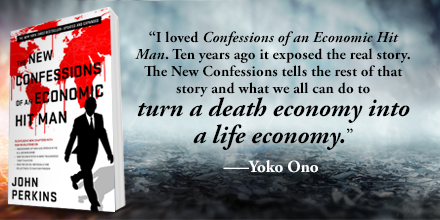
February 9, 2016
Introducing Hometown Reads!
I love the work we do with authors because I love books.
I’ve always, always loved to read. My mama likes to tell this story of me at age 3, going into my brothers’ room to ask them if they had a book appropriate for a 3-year-old girl.
If you love reading like I do, you’ll understand my passion for the new division of our company, Hometown Reads.
Through Hometown Reads, I hope to help people who love reading connect with great books and authors in their own hometowns. And I want to help authors, who often lack resources and know-how about marketing, to harness the power of their networks (local and online) to socially share their books.
We want to tap into the desire people have to connect to their local communities while igniting a #readlocal movement. We also want to help authors learn from each other and share resources, forming local marketing co-operatives of mutual support and pooling of resources to make a bigger impact for each book and message.
We’re starting in my hometown, Toledo, OH, with plans to expand to other Midwest communities and across the country to every hometown you can think of. Imagine the great reads we’ll discover! Hometown Reads will take us out of our niche of business books and allow us to make a difference in helping authors of all genres market their books more effectively.
Imagine the great reads we’ll discover, one hometown at a time. I hope you’ll join us!
If you’re an author, you can sign up and tell us your hometown here. If you’re a Toledo author, you’ll want to sign up here. If you’re an author from Cleveland, Cincinnati, or Columbus, Ohio, we’ll be rolling out in your town soon. We also have Grand Rapids and Ann Arbor, Michigan, on our short list, as well as Indianapolis, Indiana.
Have an idea of another market you’d like to see us open? Send me a note and share your ideas.
We’ll also be looking for readers in every hometown! Follow us on Facebook for more details.
Here’s what’s coming next:
On March 1, we’ll roll out our first city-specific site to feature authors. We’ve already connected with several authors in the Toledo area who will be featured through free author pages.
Once we roll out the Toledo site, we’ll begin outreach to other cities and will begin providing free marketing resources and ideas to people who sign up to be a part of Hometown Reads in any city.
Tell me something! Are you an author looking for marketing resources? Are you a reader? If you read, would you be interested in discovering great books from authors in your hometown?








